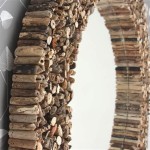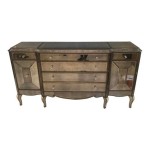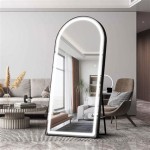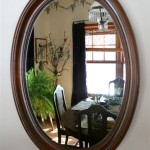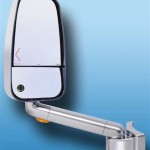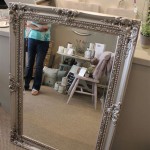DIY Vanity Mirror Ideas
A vanity mirror is a staple in many bedrooms and bathrooms, providing a dedicated space for applying makeup, styling hair, or simply checking one's appearance. While pre-made vanity mirrors are readily available, a do-it-yourself (DIY) approach offers the opportunity to customize the design, size, and features to perfectly match individual needs and aesthetic preferences. This article explores various DIY vanity mirror ideas, covering different styles, lighting options, and construction techniques.
Simple Framed Mirrors: One of the easiest DIY vanity mirror projects involves framing a standard mirror. Numerous framing options exist, from repurposed picture frames to custom-built frames using wood, metal, or even plastic. This approach allows for significant stylistic flexibility, enabling the mirror to complement existing decor. For a rustic look, reclaimed wood can be used. A more modern aesthetic can be achieved with sleek metal frames. Adding embellishments, such as shells, stones, or mosaic tiles, can further personalize the design.
Hollywood-Style Mirrors: The iconic Hollywood-style mirror, characterized by its row of exposed light bulbs, is a popular DIY project. This design typically involves attaching light sockets to the frame of a mirror, wiring them together, and adding globe-style bulbs. Different bulb sizes, shapes, and color temperatures can be used to create various effects. Dimmable bulbs offer additional control over the lighting intensity. Safety precautions, such as ensuring proper wiring and grounding, are crucial when working with electrical components.
Lighted Vanity Mirrors with Backlighting: For a more diffused and subtle lighting effect, backlighting can be incorporated into the mirror design. LED strip lights are particularly well-suited for this purpose due to their flexibility and low energy consumption. The LED strips can be affixed to the back of the mirror or embedded within a frame. Diffusing materials, such as frosted acrylic or parchment paper, can be used to soften the light and create a more even glow.
Tri-Fold Vanity Mirrors: Tri-fold mirrors provide multiple viewing angles, which can be particularly helpful for tasks like applying makeup or styling hair. Constructing a tri-fold mirror typically involves hinging three separate mirrors together. The central mirror remains stationary, while the side mirrors can be angled inwards. This design can be incorporated into a framed structure or mounted directly onto a wall.
Full-Length Vanity Mirrors: A full-length mirror is a valuable addition to any dressing area, allowing for a complete view of one's outfit. Creating a DIY full-length vanity mirror often involves framing a large mirror or repurposing an existing full-length mirror. Adding a stand or mounting the mirror securely to a wall is essential for stability.
Upcycled Vanity Mirrors: Repurposing existing items offers a sustainable and creative approach to DIY vanity mirrors. Old windows, cabinet doors, or even serving trays can be transformed into unique and stylish vanity mirrors. The existing frame or structure of the repurposed item can be used as the base for the mirror, reducing the overall construction effort. Adding a fresh coat of paint, decorative elements, or lighting can further enhance the upcycled design.
Adding Storage to Vanity Mirrors: Combining a vanity mirror with storage solutions can enhance functionality. Shelves, drawers, or small cabinets can be incorporated into the design to store cosmetics, jewelry, or other accessories. This can be achieved by building a custom frame with integrated storage compartments or by attaching separate storage units to the mirror frame or wall.
Choosing the Right Mirror: The type of mirror used in a DIY project significantly impacts the final result. Standard glass mirrors are readily available and affordable, while higher-quality mirrors offer improved clarity and reflection. Consider the size, shape, and thickness of the mirror when planning the project. Safety precautions, such as using gloves and eye protection when handling glass, are essential.
Mounting and Installation: Proper mounting is crucial for safety and stability. Wall-mounted mirrors require secure anchors and appropriate hardware. Freestanding mirrors need sturdy bases or stands. Following manufacturer instructions for mounting hardware and considering the weight of the mirror is paramount for a safe and successful installation.
Customization and Personalization: One of the primary advantages of DIY vanity mirrors is the ability to personalize the design. Paint, stain, decorative finishes, and embellishments can be used to create a unique piece that reflects individual style. Matching the design to existing decor creates a cohesive and visually appealing space.
By exploring these diverse DIY vanity mirror ideas and utilizing readily available materials, individuals can create functional and aesthetically pleasing additions to their homes. Carefully planning the design, selecting appropriate materials, and prioritizing safety throughout the construction process ensures a successful and rewarding DIY project.

Diy Vanity Mirror You Ve Probably Wanted To Make Forever Idee Da
:max_bytes(150000):strip_icc()/mirror-with-bulbs-for-make-up-in-the-make-up-room-1205595344-bc0433191552472780580b9db719c191.jpg?strip=all)
7 Diy Lighted Mirror Ideas To Add A Little Extra Shine Your Space

Diy Light Up Vanity Mirrors You Can Make Ohmeohmy Blog

Bohemian Makeup Vanity Designs With Accent Lights Diy Table Mirror

20 Creative Diy Mirror Frame Ideas To Inspire Your Next Project Bathroom Mirrors Makeover

Diy Vanity Mirror Mr Kate

15 Best Diy Vanity Mirror Ideas To Craft Your Own With Lights

8 Amazing Bathroom Mirror Ideas Diy Update

How To Make A Diy Makeup Vanity With Hollywood Lighted Mirror

10 Diy Vanity Mirror Projects That Show You In A Diffe Light



